ReservationSearch and reserve rooms
Click here to confirm, change or cancel your reservation
Shinkansen accommodation plan
提携法人専用予約
2025.04.20
Pray for daily health at Sukunahikona Shrine, located in the town of medicine
NEIGHBORS
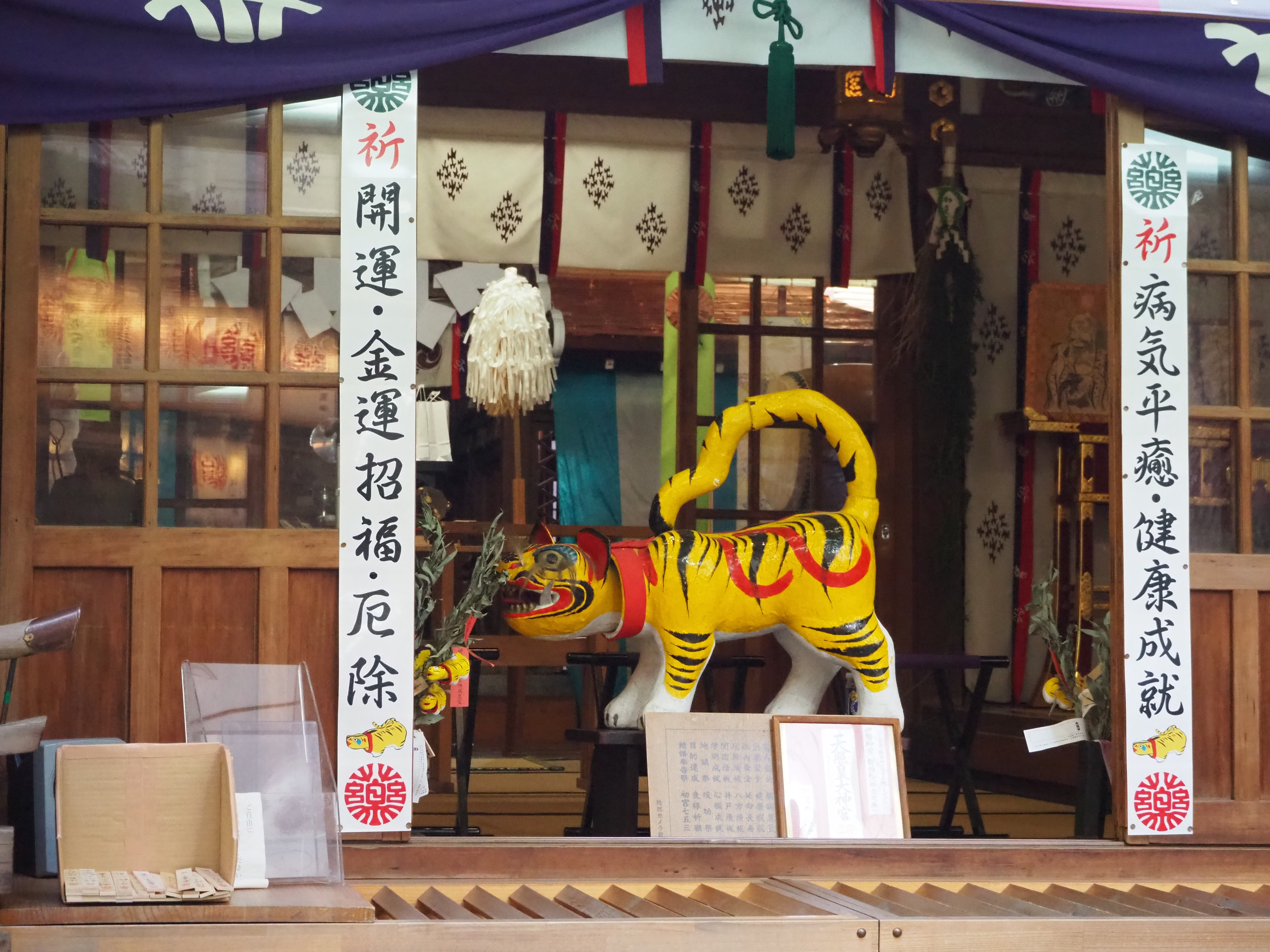
The city of Osaka is characterized by the "Ryogawamachi" style, where towns developed on either side of a street that runs east to west. Among these towns, "Doshomachi" was formed by the gathering of drug monopoly merchants.
Located about a five-minute walk from Kitahama Station on the Osaka Metro Sakaisuji Line, this town has been deeply involved in the development of Japan's pharmaceutical industry, and even today is lined with many pharmaceutical companies and drug wholesalers.
Sukunahikona Shrine, which has roots in this town and is loved by locals as the god of medicine and health, is affectionately known as "Shinnou-san" by the locals and is an important place where people pray for daily health.
The guardian deity of health in the medicine town of Doshomachi
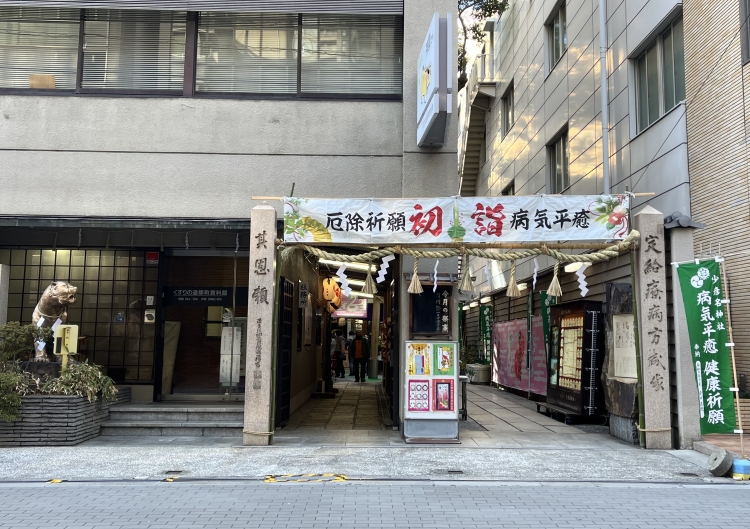
"Sukunahikona Shrine" quietly stands in a valley lined with buildings
The origins of Sukunahikona Shrine date back to 1722, when Tokugawa Yoshimune officially recognized the activities of drug merchants who had a monopoly on the sale of raw materials for traditional Chinese medicines.
In 1780, when they started dealing in Japanese medicine, the drug merchants invited a branch of the deity from Gojo Tenjingu in Kyoto and built a shrine to enshrine both the Japanese god of medicine, Sukunahikono-mikoto, and the Chinese god of medicine, Shennong. Since then, the shrine has played a role in protecting the health of the local community.

The current shrine building is a wooden structure built in 1910 (Meiji 43).
When Osaka experienced a cholera epidemic in 1822, a pill made from a tiger's skull called "Kotosakkiuouen" proved effective, and the paper tiger became the shrine's symbol. During the air raids of the Pacific War, not only "Sukunahikona Shrine" but also the buildings of pharmaceutical companies such as Ono Pharmaceutical Co., Ltd. escaped fire, and it is said that the god of medicine protected the city.
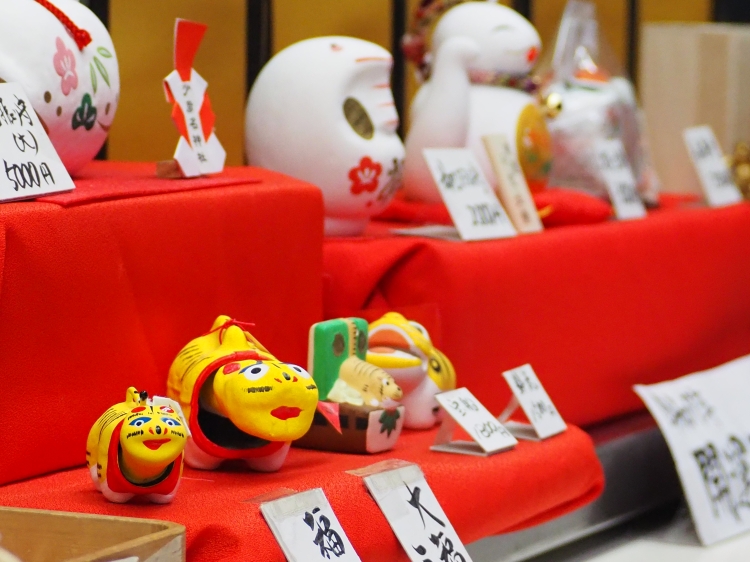
The shrine's symbol, the "Paper Tiger" amulet
Strong ties with companies in the pharmaceutical town continue to this day
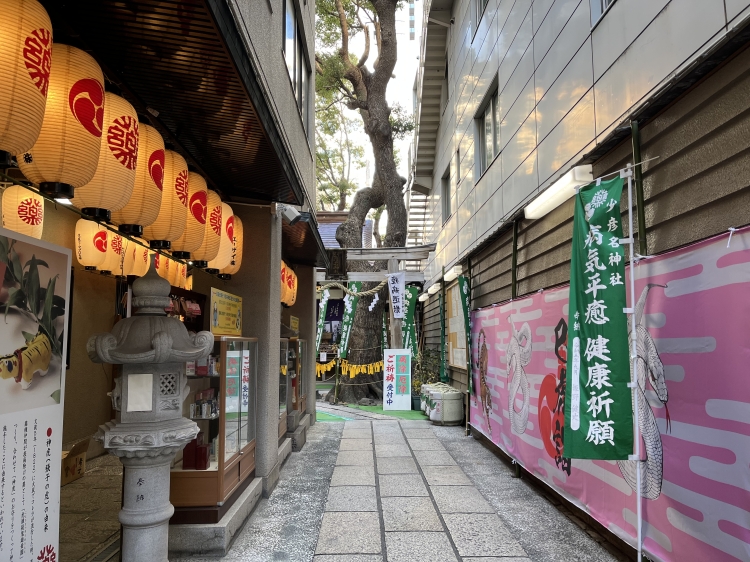
The aroma-filled approach to the shrine, donated by Ogawa Fragrance Co., Ltd.
As you walk along the approach to the shrine, you will be greeted by the soft scent of fresh aroma. This scent is donated by Ogawa Fragrance Co., Ltd., a company headquartered locally. The company uses its knowledge as a specialist fragrance company to select scents that provide a sense of peace to visitors.
The Shinno Festival, held every year on November 22nd and 23rd, is a festival that has been held since the Edo period when pills were made to treat cholera epidemics. This festival is supported by the Yakuso-ko, an association of around 400 pharmaceutical-related companies, and many local companies attend the festival to pray for the safety of medical care.
The coincidence that the day the coronavirus treatment drug was approved coincides with the Shennong Festival symbolizes that the 200-year-old tradition of praying for medical safety continues to this day, and that Doshomachi plays a role in protecting people's lives.
A shrine for praying for health and caring for all life
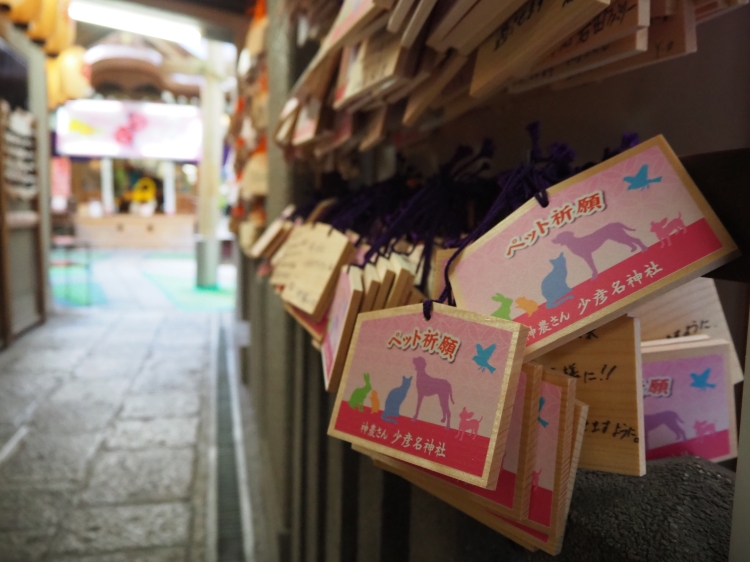
Many visitors write their wishes on votive plaques, praying for the health of their pets.
It's not just the people of the medicine town who visit Shennong Shrine. People who pray for daily health and students aspiring to work in the medical field come from all over the country. Recently, the number of visitors praying for the health of their pets has also increased after a local company offered a prayer for veterinary medicines.
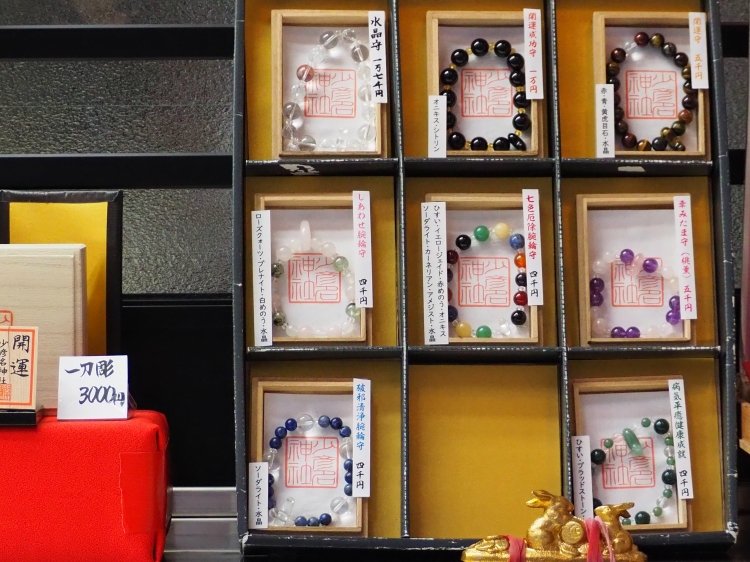
Each color has a different meaning, such as warding off evil or praying for happiness.
After worship, many people receive a paper tiger, the symbol of the shrine, as a gift (paying a fee as a token of gratitude for the protection), but bracelet charms for good health are also popular. These charms, which use the magatama (comma-shaped jewel), the symbol of the shrine, are imbued with the power of the god of medicine and are a reassuring presence that protects your daily health.
A journey for adults praying for good health: The story of the town of medicine
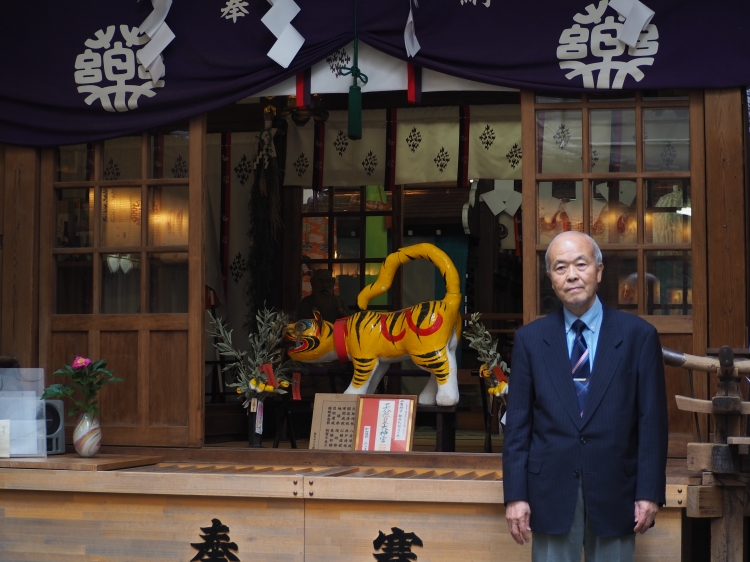
Mr. Fukazawa, who told us about the history of the shrine and the town
"Osaka has long been a city of commerce. There is a culture of everyone coming together to make a better city, which is why many of the people here are full of kindness," says Tsuneo Fukazawa, director of the Doshomachi Medicine Museum, which is attached to Sukunahikona Shrine.
"If you'd like to talk to me, I'll tell you all about the town," he said with a smile, and his strong desire to protect the local culture and pass it on to future generations was apparent.
It's a time to experience the history of Doshomachi, the town of medicine, and to feel gratitude for your health. A moment of prayer for good health at Sukunahikona Shrine, "May I continue to live a healthy life," will make your trip to Osaka even more enjoyable.
少彦名神社
電話番号: 06-6231-6958
住所:大阪府大阪市中央区道修町2-1-8
アクセス:地下鉄堺筋線 北浜駅から徒歩5分
HP :https://www.sinnosan.jp
SNS:https://www.instagram.com/sinnosan/
*営業時間や定休日についての詳細は、上記のリンク先にてご確認ください。



